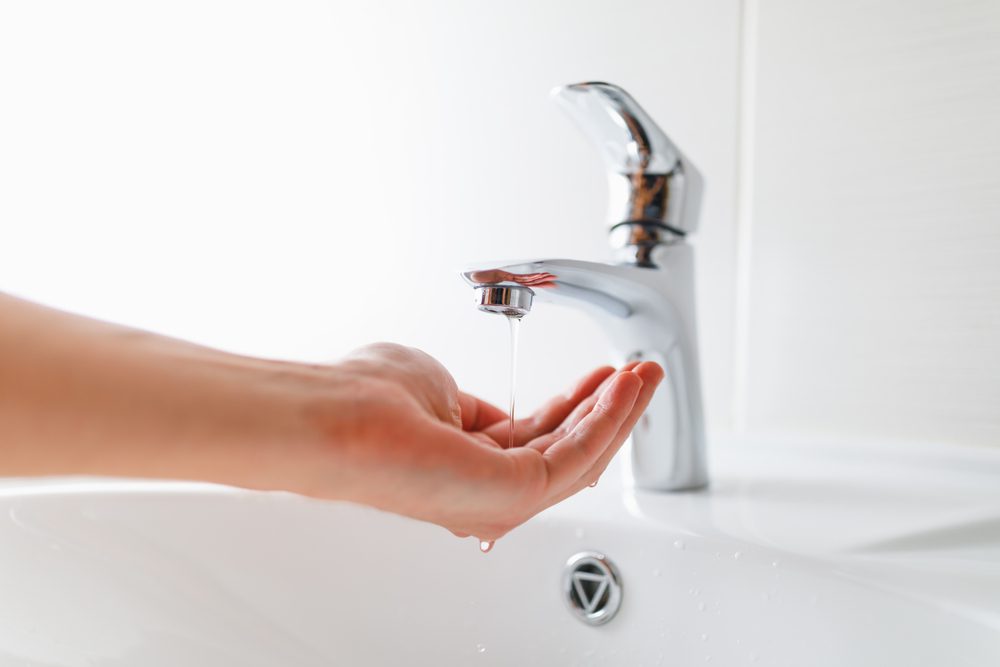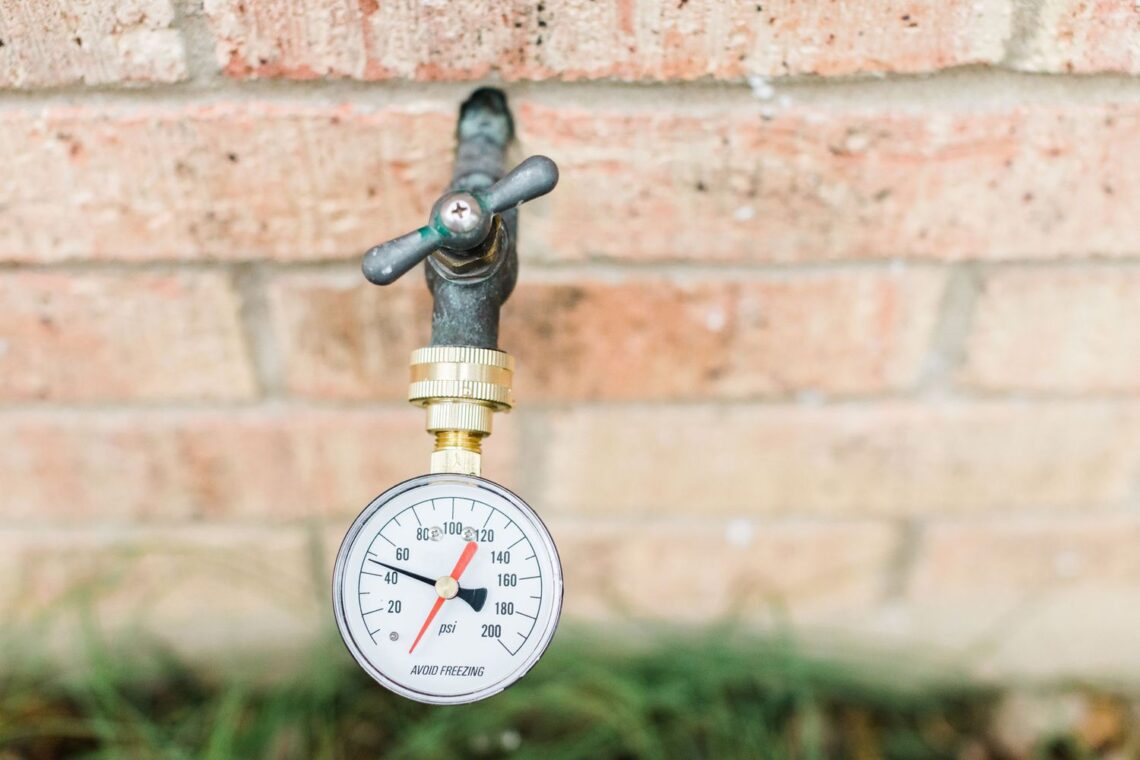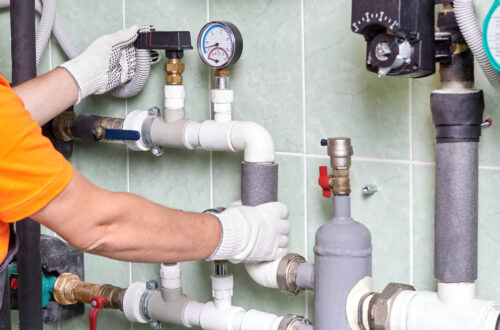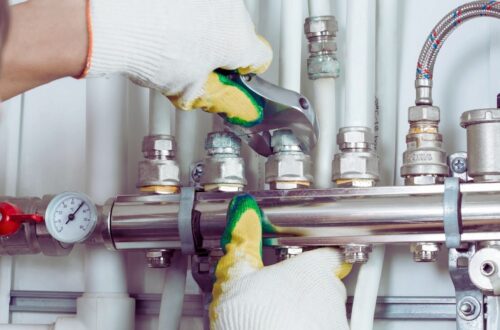Few household problems are more frustrating than low water pressure. Whether you’re trying to enjoy a warm shower, wash the dishes, or water the lawn, low pressure can quickly turn simple tasks into annoying chores. Fortunately, understanding the common causes and solutions can help you restore your home’s water flow with minimal hassle.
Common Causes of Low Water Pressure
-
Clogged Pipes or Fixtures
Over time, mineral deposits—especially from hard water—can build up in your plumbing system, narrowing the pipes and restricting water flow. Faucets and showerheads may also become clogged with sediment. If only one fixture has low pressure, this is likely the issue.
-
Corroded Plumbing
Older homes with galvanized steel pipes are particularly susceptible to corrosion. As the pipes deteriorate from the inside out, they restrict water flow even if there’s no visible leak. This kind of issue often develops slowly over years and affects multiple fixtures throughout the home.
-
Leaks in the Plumbing System
A hidden leak can divert water away from your intended fixtures. This not only reduces pressure but can also cause water damage over time. Watch for signs like damp walls, floors, or ceilings, as well as a noticeable spike in your water bill.

-
Partially Closed Valves
Your home has main shutoff valves and potentially individual fixture valves. If any of these are partially closed, they can restrict water flow. Sometimes these valves are accidentally left ajar after maintenance work.
-
Faulty Pressure Regulator
Some homes have a pressure regulator that ensures water enters the house at a consistent pressure. If the regulator fails, it could either cause very high or very low water pressure. A failing regulator often affects the whole house, not just one area.
-
Problems with the Municipal Water Supply
Occasionally, the issue lies outside your property. The city’s water supply may be experiencing high demand, a burst main, or maintenance work. In these cases, your neighbors are likely experiencing similar issues.
-
Shared Pipelines
In apartments or multifamily buildings, multiple units may share the same water line. If everyone uses water at the same time—like during morning showers—the pressure can dip significantly.
How to Fix Low Water Pressure
-
Clean or Replace Fixtures
If only one fixture is affected, start by removing and cleaning the aerator or showerhead. Soaking it in vinegar can dissolve mineral buildup. If that doesn’t help, replacing the fixture might solve the issue.
-
Check and Open All Valves
Locate your home’s main water shutoff valve and ensure it’s fully open. Also check any water meter valves if applicable. Sometimes valves are turned off during plumbing repairs and not fully reopened.
-
Fix Leaks
Inspect your home for signs of leaks. If you suspect a hidden leak, a professional plumber can perform a pressure test or use thermal imaging to locate the issue. Prompt leak repair not only improves water pressure but prevents costly water damage.
-
Replace Corroded Pipes
If your home has older galvanized steel pipes, you might need to repipe the house with modern materials like copper or PEX. This is a more extensive job and should be done by a licensed plumbing contractor. While it’s a bigger investment, it drastically improves flow and can increase your property value.
-
Adjust or Replace the Pressure Regulator
If your pressure regulator is faulty, a plumber can test and adjust it—or replace it if necessary. These regulators are usually found near the main water line where it enters your house.
-
Install a Water Pressure Booster
If your municipal supply pressure is consistently low, you may benefit from a water pressure booster system. These systems use a pump and pressure tank to increase flow into your home. A professional can help determine the right model based on your household needs.
-
Schedule Regular Plumbing Maintenance
Routine plumbing check-ups can help prevent low pressure problems from occurring in the first place. A licensed plumber can detect early signs of corrosion, check for slow leaks, and ensure all valves and regulators are functioning properly.
When to Call a Professional
 While some causes of low water pressure—like cleaning a faucet—are easy to fix, others require professional expertise. If you suspect a leak, corroded pipes, or a regulator issue, it’s best to call a licensed plumbing technician. Not only will they diagnose the problem accurately, but they can also ensure that repairs meet local building codes and safety standards.
While some causes of low water pressure—like cleaning a faucet—are easy to fix, others require professional expertise. If you suspect a leak, corroded pipes, or a regulator issue, it’s best to call a licensed plumbing technician. Not only will they diagnose the problem accurately, but they can also ensure that repairs meet local building codes and safety standards.
Low water pressure is a common but fixable issue. From simple DIY solutions to more complex plumbing upgrades, there are several ways to get your home’s water flow back to normal. Pay attention to where and when the pressure drops, as this often offers clues to the root cause. And when in doubt, don’t hesitate to call a professional—your comfort and home’s integrity are worth it.
By staying proactive and informed, you can keep your home’s plumbing system running efficiently and enjoy the strong, consistent water pressure you deserve.





